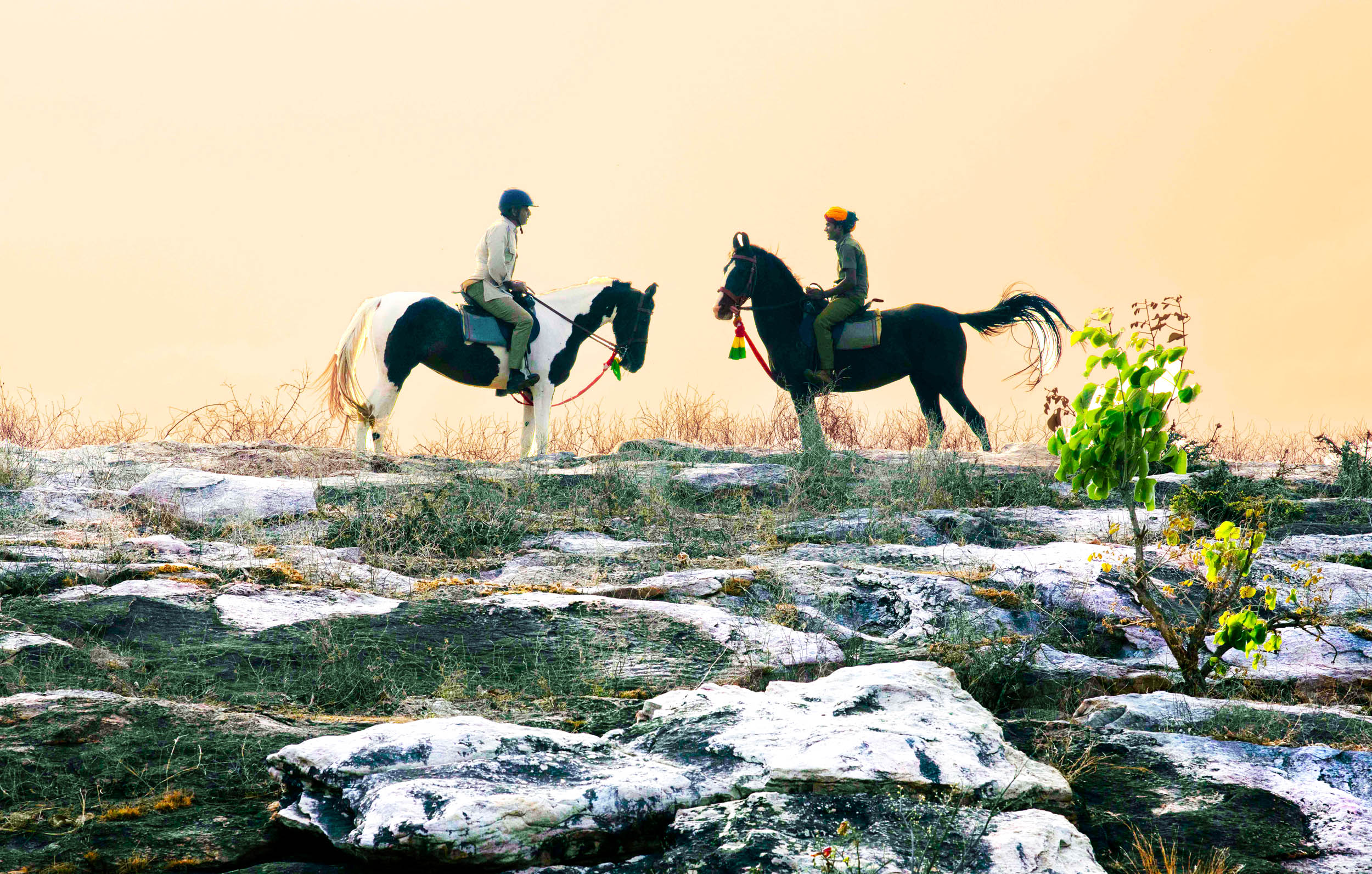India is no stranger to horses. These strong and beautiful creatures have been evoked innumerable times in art and literature, history, mythology, and folklore. It is common knowledge that they were the Indo-Aryans’ choice of transportation during their migration to the sub-continent, ever since, horses have aided empire building, fuelled territorial wars, and have continued to be part of the cavalry in modern day armies. Horses have also been an important part of sporting history, especially polo, the modern version of which has its origins in India’s Manipur. So when you exchange your hiking shoes for riding boots, and replace your four wheels with four hooves, you’re not only choosing one of the best ways to experience Rajasthan’s extraordinary landscape, you’re also perpetuating an ancient tradition.

Marwari Horses: More so, when you sign up for cross-country jaunts on the lean and athletic backs of Marwari horses, one of five native Indian breeds that include the Kathiawari, Zanskari, Spiti and Manipuri. The Marwari is distinguished by its lyre or sickle-shaped ears that curve inwards and sometimes touch, and nostrils which are often likened to a kairi or paisley. In addition to this, it is born with what in local equestrian parlance is referred to as revaal or rehwal, a unique quick gait said to be faster and smoother than a trot, and which allows riders to cover long distances in the desert in greater comfort. It should come as no surprise, therefore, that these powerful creatures are the pride and joy of Rajasthan’s desert heritage.


4 years of age
Responsible Tourism: Celebrated for their endurance capacity, these horses can traverse terrains that are often beyond the ken of powerful 4x4s. This ability has not only enabled tourism in out of the way places in the state, but is also helping to support traditional ways of life in Rajasthan’s hinterland. “Our stable-hands, grooms, safari guides, as well as hospitality staff, are mostly locals from nearby villages,” shares Dhananjay Singh of Bijaipur Horse Safari. We have driven down to the eponymous village, in a remote corner of southern Rajasthan, to get ourselves a horseback perspective of Mewar. “It’s a win-win for all, ensuring sustainable livelihoods for local communities, while simultaneously providing the immersive experiences our clients seek.”


The Inventory: At the neat, well-tended stables that house a dozen or so horses, we are introduced to some of Bijaipur’s finest–Kajal, Koel, Roopwant. Ashvajit, the stallion, broods by himself in a large enclosure, while Tejroop, a young blood, neighs up a ruckus in another. It is early morning and they are being led to the ring, one by one, for their daily exercise. A couple of them are reluctant, digging in their hooves and refusing to move, even as a teenage lad cajoles and commands. Sixteen year-old Gagan Choudhury, from Chittorgarh, has been a fixture at the stables since he was six-months old, he tells us and a rider at three. His astonishing bond with the doe-eyed beauties underscores that association. “They’ve become lazy since the pandemic,” he laughs, mock-swatting the nose of the piebald nuzzling him.

Animal Welfare: Being worth their weight in gold has meant that the well-being of these once prized warhorses is paramount for horse-loving owners. “Riding crops and whips are no longer used and copper and sweet iron bits have replaced thorn bits,” Dhanajay elaborates for us the ethical practices in place for equestrian activities. “The shoeing process has improved. And with chipping steadily gaining ground, we expect branding of horses to be discontinued soon.” By virtue of being desert horses, the Marwaris are low maintenance and can go longer with less food and water. “However, utmost attention is paid to their health and nutrition. With grazing grasslands having gradually disappeared, our horses are fed grain and grass hay, bran, barley, along with the staples jowar and bajra.”
Horse Safaris: Whether you’re looking for an adrenaline rush or simply wanting some fun, signing up for a horse safari could well be the answer. At Bijaipur, half day and full day safaris are offered to beginners following twice-daily riding lessons. The experienced can consider a weeklong horseback expedition with a group size limited to a maximum of 12 riders. This option factors in three days for brushing-up skills, village walks, and other cultural interactions, before saddling up for the cross-country adventure further afield. A typical safari day could look like this: riding through green fields amidst hills, picnicking in the open, lakeside camps, and dining under the stars. Another could have you splashing through shallow rivulets that lead to ruined forts in deserted villages beyond dense woodlands.
Dos & Don’ts
Wear long-sleeved shirts to avoid scratches.
Pick horses that matches your size; rider weight limit is generally 90 kgs.
Avoid bruised or wounded animals, look closely under saddles and harnesses for open sores.
Make sure they’re healthy, and backbones, hips or pelvis are not visibly poking through the flesh.
Choose a happy horse; signs include an even posture with head held high and ears facing forward.
Best season: October to March.
Gear provided: Helmets, Chaffs.
Connectivity: Udaipur (151 kilometres) is the closest airport; Chittorgarh (41 kilometres) is closest rail head
Where to stay: Castle Bijaipur




